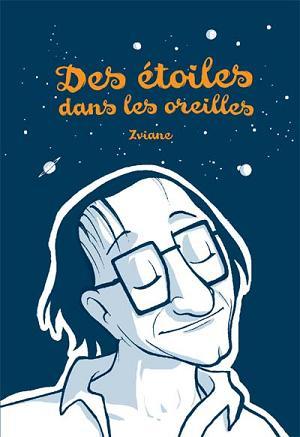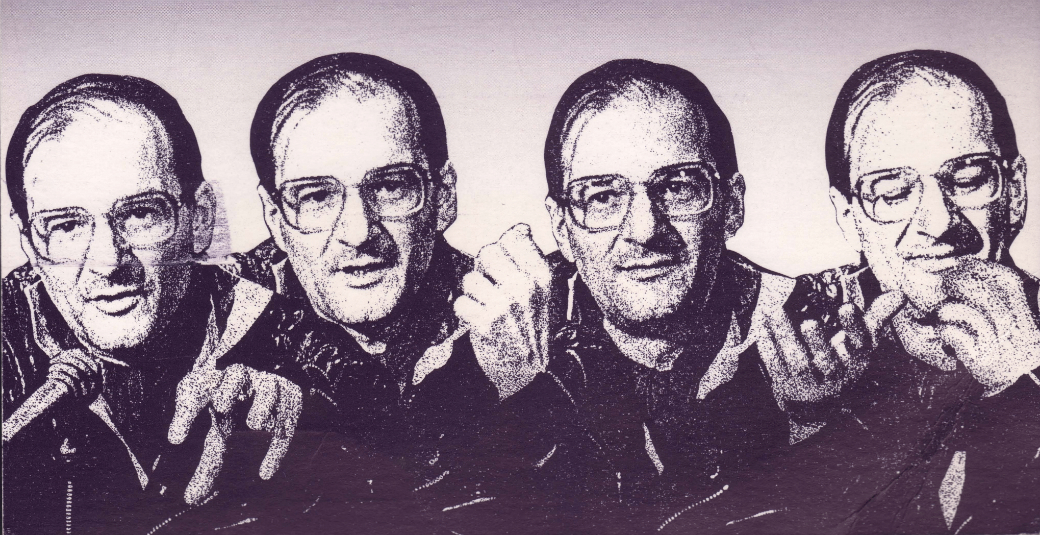In 1801, Goethe wrote to Felix Mendelssohn that “where nothing new is actually produced, an art cannot make itself vividly felt.” Innovation and impact are ideas Canadian composer Claude Vivier took to heart.
Born in 1948 to unknown parents,Vivier studied at the Conservatoire de musique de Montréal before departing for Europe in 1971, where, for three years, he studied with Karlheinz Stockhausen. Through working with the German composer (who initially dis-liked the French Canadian for his irreverent manner and slovenly appearance), Vivier largely discovered his distinct creative voice, one which he continued to develop outside the aegis of officially-sanctioned contemporary musicdom.
He would return to Canada periodically, and received commissions from the Société de musique contemporaine du Québec, the National Youth Orchestra of Canada, and the Canadian Music Awards. Travels through Bali in the late 1970s significantly magnified his creative sensitivities and led directly to Zipangu (1980), Lonely Child (1980), Prologue pour un Marco Polo (1981), and Bouchara (1983), all intended to be part of an opera about Marco Polo. Glaubst Du an die Unsterblichkeit der Seele? (Do you believe in the immortality of the soul?; 1982-83), which Vivier started in Paris, is a perfect distillation of the way the composer knit life and art together. His final work depicts a character named Claude who meets a man for a sexual encounter and is later murdered by the stranger; Vivier, with the manuscript still on his desk, met this exact fate in 1983.
Vivier’s ethereal works spent years sitting within the quiet realms of narrow fandom; even during his lifetime, his work couldn’t be easily categorized within any of the movements unfolding around him. His dense, theatrical compositions, with touchstones of religion and ritual (and themes of sex and death) were a challenge for both artists and audiences. Regardless, Vivier’s name has steadily gained in prominence over the past two decades. The Schoenberg Ensemble released a highly acclaimed CD of Vivier works in the late 1990s, and his works are now firmly present within the programming of many music institutions in Canada and abroad. In 2017, contemporary music outfit Soundstreams Canada, who specialize in presenting modern works, gave the world premiere of the first staged production of Vivier’s Musik für das Ende (Music For The End, 1981) to much acclaim; the production will be restaged in Toronto in May 2020 before touring to major festivals and venues throughout North America and Europe, with a subsequent international tour planned for 2021.
“During his lifetime, the press in both Toronto and Montréal treated him very, very cruelly, so it’s somewhat ironic that he’s now considered to be a musical icon,” says Lawrence Cherney, Artistic Director of Soundstreams Canada. “But he was taken very seriously during his lifetime by some legendary figures, particularly in Europe. We’re not quick in Canada to reward our own and recognize talents like Vivier until someone outside does so first.”
Kopernikus (1980), Vivier’s only opera, received its first staging at London’s Almeida Festival by Pierre Audi in 1985, with a subsequent revival in 2006. Peter Sellars staged the work this past fall as part of Le Festival d’Automne à Paris, with Staatsoper Berlin pre-senting its own staging in Jan. 2019. Canadian company Against the Grain Theatre (AtG) produced it at the Banff Centre two years ago, and is remounting it in Toronto this April. Less a formal opera than a series of ritualized tableaux, Kopernikus makes use of German, French, and a language created by Vivier to convey tonal colour and suggest meditative states. AtG’s Founder and Artistic Director Joel Ivany, who helmed the Banff production and its Toronto iteration, discovered the composer’s work while reading about Sellars’ interest. “I slowly started to unpack what it was, while trying to gobble up as much as I could,” he recalls.“If you get pointed in the right direction, there’s an encyclopaedia of knowledge around Vivier.” Consisting of both real and mythical figures (including Lewis Carroll,Tristan and Isolde, and The Queen Of The Night), the principal character Agni (the Sanskrit word for fire, here given female form) could well be a stand-in for the composer himself, discussing the nature of art and divinity with musical figures (like Mozart) and seeking enlightenment through the transformative power of endings.
Death was a theme Vivier would return to repeatedly throughout his work; indeed, the subtitle of Kopernikus is “Rituel de Mort,” or “death ritual.” One questions how much Vivier willed his own demise, especially since he was working on an opera about the death (intentional or not) of Tchaikovsky at the time of his passing. “He made his art an innate part of his biography—he staged his life as an artefact, and even staged his death, apparently, as an artefact,” says Vladimir Jurowski. The busy conductor (Principal Conductor, London Philharmonic Orchestra; Chief Conductor and Artistic Director, Rundfunk-Sinfonieorchester Berlin;Artistic Director, State Academic Symphony Orchestra of Russia; Generalmusikdirektor Designate, Bayerische Staatsoper) has been a prominent voice on the international classical stage in supporting and staging Vivier’s unique sound world. Last February, together with contemporary chamber group ensemble unitedberlin (of which Jurowski is Artistic Advisor), he led an evening of Vivier’s works, named, not inauspiciously, A Sacred Act, an allusion to an article penned by Vivier for Le Devoir in 1970: “I want art to be a sacred act, the revelation of forces, the communication with these forces. A musician should not be creating music, but rather moments of revelation, moments of forces in nature, forces which have existed, exist and will exist, as forces of truth.”

Vladimir Jurowski in rehearsal for London Philharmonic Orchestra’s Jan. 2019 Die Walküre. Photo: Simon Jay Price
Various forces of Vivier’s truth (and life) were featured via the twenty-two ensemble musicians and twelve soloists who were part of the Berlin presentation, with Jurowski acting out the role of a pseudo-priest. Searing performances of Glaubst Du an die Unster-blichkeit der Seele? bookended the presentation, a poignant, powerful artistic statement interweaving life and art.“I wanted to consciously get away from (the circumstances around Vivier’s death), and try to look at other aspects, more down-to-earth aspects,” Jurowski explains, “simply because…you can say many beautiful words about the spirituality of the music of J.S. Bach, and of course that is intrinsically connected with Bach’s spirituality, with his religion. [Conversely,] Vivier was in permanent search of God; [but] I don’t think he ever found…it.”
Alex Pauk is Music Director of Esprit Orchestra, Canada’s only full-sized orchestra devoted exclusively to new music. He was friends with Vivier, and recalls getting telephone calls during which the composer would rest the telephone headpiece on the piano and play new works. “He’d be taken over by it, totally. That kind of energy transformed itself into the reality of the music, of performing it— so there’s a direct link between the way he would be sitting at the piano playing, and what came out as written music. It was kind of… ‘madness’ is the wrong word… being taken over by it, like a spell.”
Concert-goers in Moscow got a taste of this unique spell in November, when ensemble unitedberlin joined Jurowski for a performance of Bouchara as part of the Another Space Festival, a biennial event celebrating contemporary composition. “(Vivier) remained somehow on the outside, and I think it’s exactly that which attracts us now: he had his own individual purpose of vision, and he found personal access to the quality of beauty,” says Jurowski. This very quality, one which powerfully permeates all of Vivier’s works, some-times in shrieks, other times in wispy whispers, was a very taboo concept in post-war Europe.
Many 20th-century composers grappled with the challenges of direct and heart-full expression, particularly within or outside of the idiom of the avant-garde. At the time, many mulled over German philosopher Theodor Adorno’s 1949 quote (from “Cultural Criti-cism and Society”, later part of Prisms, in 1967), that “(c)ultural criticism finds itself faced with the final stage of the dialectic of culture and barbarism.To write poetry after Auschwitz is barbaric.” Adorno softened his stance in later years, but the dilemma remained: what role, if any, should beauty play in contemporary art?
“Several people were searching for an individual solution to this problem,” Jurowski says. “One of them was (Hans Werner) Henze, who was also strongly stigmatized by his contemporaries. I think (Henze and Vivier) had a similar approach: they both searched for beauty in the forbidden areas, such as eroticism, sexuality, homosexuality, among other things, and also the attraction of the unknown.” Horror as beauty; the unknown as haven; the forbidden as enlightenment (and vice versa)—seeming paradoxes in which Vivier found creative and spiritual nourishment. In 1983 he remarked that “(n)ot knowing my parents enabled me to create a magnificent dream world. I shaped my origins exactly as I wished.” Likewise, Vivier created his own definitions of beauty. Known for his slovenly appearance, for the odorous sheepskin coat he perpetually wore, for his loud, vulgar antics and proclivities toward the darker recesses of sexuality,Vivier’s life was an intense, headlong quest into a “magnificent dream world” and thus, into the unknown; it was an instinct which perhaps found its most full manifestation through his demise, leaving a finite body of work (49 pieces) encapsulating a notion of beauty in sculpted brevity.

Graphic novel about Vivier released by the Societe de musique contemporaine du Quebec (SMCQ). Click image to read the novel!
Cherney says one of the reasons Vivier’s work resonates is “because of his preoccupation with ritual, but not the kind where we are invited in as passive observers. Claude sees the audience as ‘celebrants,’ participants in the ritual—we’re not invited in to ‘watch’ but rather to become part of the ritual as it unfolds.” That ‘celebrant’ quality points at the composer as well as his unhinged lifestyle—a kinship of sorts with the Renaissance rebel astronomer/ mathematician, Copernicus, is not beyond the realm of plausibility, particularly considering the similar socio-religious contexts from which their works sprang. Both fig-ures shared a practice and observance of faith; an embrace and a rebellion in one fell swoop. Copernicus had taken minor orders but ultimately relinquished his sinecure in Warsaw, while Vivier was schooled by the Marist Brothers, a religious order which prepares boys for the priesthood. He was asked to leave the novitiate at eighteen—report-edly for reasons connected to “inappropriate behaviour,” though Vivier never made a secret of his homosexuality, which put him at odds with the distinctly conservative culture of 1960s Canada, and more specifically the concentrated Catholicism of Québec. He wrote during Kopernikus’ composition that “(w)hat interests me [… ] is the idea of the cosmic seeker, who began to see beyond the earth. He is not introduced until the end of the opera, it is he who opens the gates of heaven.”
This heaven is realized in compositional innovations which, to paraphrase Goethe, become “vividly felt” through languages (sometimes invented), chanting, shrieks, hand-mouth ululations, and deceptively simple melodies that float, butterfly-like, passing through stentorian chimes, blazing gamelans, and pungently urgent strings. “There’s a certain kind of simplicity to it overall even when there are complex things to do as a performer,” Pauk notes, “but all of that is only there to serve this other thing, which is the spirituality and other-worldliness. Not only has he invented languages in some pieces, but he’s invented a kind of music that is really his own, in its melody and structure. What he’s trying to…create [is] a language of music, not just of words and vocal sounds.”
Jurowski doesn’t see the key to appreciating Vivier’s work being connected with his “ritual obsession per se,” nor in “the quest for the divine, per se. The answer is in the sounds he created, in the sound combinations, of instruments and human voices. After all, it’s what the composer leaves us with: notes. Bunches of notes.” he says. “This is the decisive point where we separate a justly or unjustly forgotten composer from a truly great composer, and Vivier, for me, is a truly great composer who only found his greatness toward the end. Those twenty-five minutes of Prologue pour un Marco Polo are among the most sublime sounds I’ve ever heard in my life.”
“His music removes you from where you are and brings you into this other world which is in some ways indefinable,” says Ivany. “It’s truly immersive in that context. For audiences now, we crave and need those moments more than anything.”
Listen to ensemble unitedberlin‘s Viver performance from last February under the direction of Vladimir Jurowski
Against the Grain Theatre’s production of Vivier’s Kopernikus runs from April 4-13 at Toronto’s Theatre Passe Muraille.






